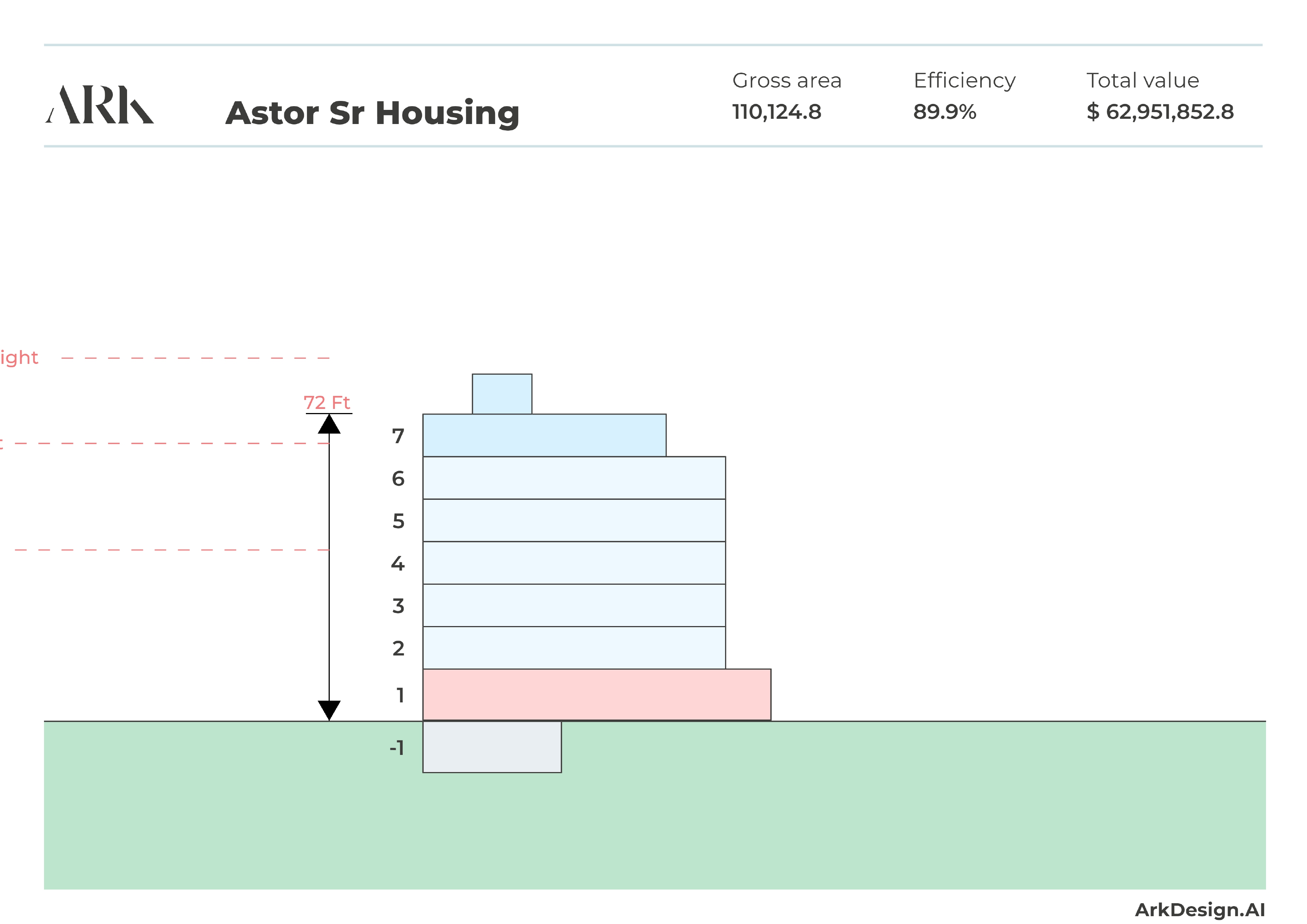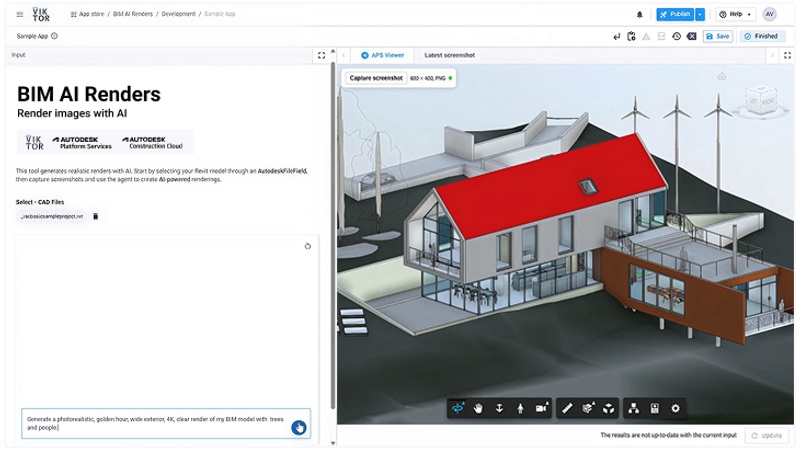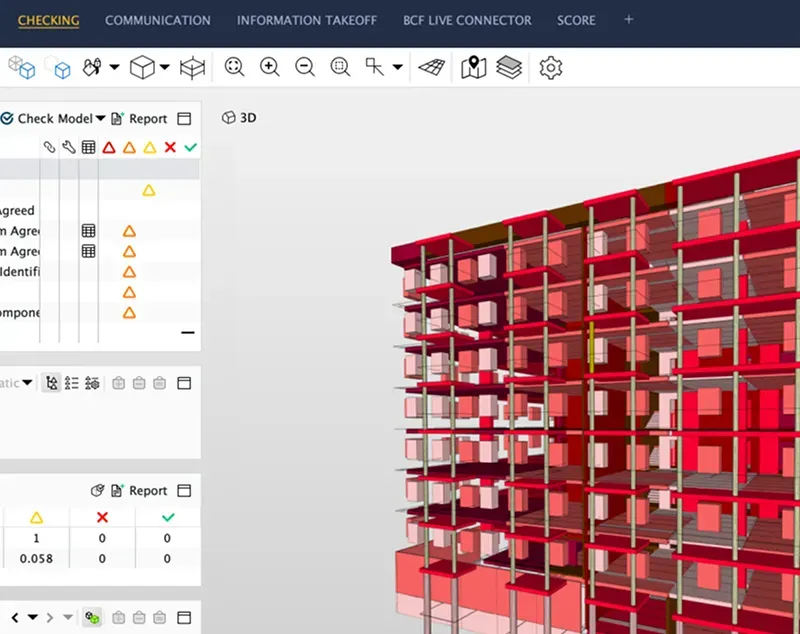Multi-Family & Mixed-Use Design Through AI: Meet ArkDesign
With growing demands for speed, precision, and adaptability in early-stage real estate development, architects and developers are rethinking how feasibility and schematic design are done. ArkDesign.AI founded by architect and developer Dity Ayalon is stepping in to change that. Built from firsthand experience navigating the complexities of New York City's building landscape, the platform uses automation to replace weeks of manual work with fast, buildable design options—without sacrificing architectural quality. We spoke with Ayalon to understand how ArkDesign is reshaping the pre-development process, helping professionals explore more possibilities, make better-informed decisions, and focus on what matters most: good design.

Fig. 1) High-level summary of the Astor Senior Housing project generated through ArkDesign.AI
1) What is the history and background of ArkDesign?
ArkDesign emerged from my firsthand experience working across multiple sectors of the architecture and development industry in New York City. Having served as an architect, project manager, and developer representative, I witnessed a critical inefficiency in how early-stage planning and feasibility analysis were conducted. The traditional approach was painfully repetitive, unnecessarily slow, and simply not optimized for the fast-paced demands of urban development. What struck me most was how these limitations affected the critical decision-making stage where developers analyze sites before acquisition.
We built ArkDesign to fundamentally transform this process. Our platform harnesses AI to automate and streamline feasibility analysis and schematic layouts from day one of project conception. Unlike the constraints of human-only analysis—which typically produces a single design option after weeks of work—our AI engine can rapidly generate multiple optimized scenarios, allowing developers and architects to explore the full potential of a site in a fraction of the time.
This capability shifts the entire paradigm of pre-development analysis from speculation to data-driven decision making. When considering property acquisition, our clients can now explore numerous configurations before committing capital, mitigating risk while maximizing creative possibilities.
2) What is ArkDesign's core mission and vision for generative design in AEC?
Born in the challenging real estate landscape of New York City, ArkDesign.AI was created to solve a fundamental problem: how to rapidly analyze development potential without sacrificing quality or compliance. Our platform automates the most calculation-intensive aspects of design—layout optimization, unit mix determination, area calculations, massing studies, and detailed metrics like net-to-gross ratios and efficiency benchmarks.
Our mission extends beyond just speed. We're creating a new relationship between designers and technology where AI serves as an amplifier of human creativity rather than a replacement. I firmly believe that generative design should augment architectural thinking, not substitute for it. The true vision is transformative: we want to shift the industry from assumption-based to data-driven decision making at the earliest stages of design. By generating comprehensive feasibility reports within minutes rather than weeks, we're enabling professionals to make informed decisions based on robust analysis rather than educated guesses.

Fig. 2) Zoning-compliant massing diagram showing a stepped profile of the building's height and floors.
3) How does ArkDesign differentiate itself from other generative design platforms?
The generative design landscape is increasingly crowded, but most platforms operate at either extreme of the spectrum—pure conceptual form generation with little practical application, or narrow technical optimization for specific building systems. ArkDesign occupies the critical middle ground where actual development decisions are made.
Our platform differentiates itself through its comprehensive understanding of real-world complexity. We've built systems that simultaneously account for zoning requirements, egress standards, ADA compliance, and unit mix optimization—the factors that determine whether a building can actually be constructed and operated profitably.
What truly sets us apart is our focus on producing actionable layouts and feasibility metrics rather than just visually impressive concepts. Every output from our system has the potential to be buildable and code-compliant, ready to be refined by architects rather than completely reworked. This practicality stems from our deep understanding of multi-family development, where the unit mix and floor plate efficiency directly determine project viability.
While other tools might generate impressive but impractical forms, we're generating financial models and spatial solutions simultaneously. This integrated approach ensures that every design option produced isn't just architecturally interesting but economically viable—bridging the historical gap between creative and commercial considerations in development.
4) What are the key features and capabilities of ArkDesign?
ArkDesign offers a comprehensive, structured approach to schematic design and feasibility analysis specifically tailored for multi-family and mixed-use projects. Our platform guides users through a logical progression that mirrors the actual development process, but at exponentially accelerated speeds.
The journey begins with property definition, where users establish fundamental parameters like floor count, unit targets, building uses, and applicable zoning districts. From there, the system enables progressive refinement—developing schematic floor plates, customizing vertical cores, and defining circulation pathways.

Fig. 3) Basement-level mechanical and circulation layout automatically generated by ArkDesign
What makes our approach unique is how we handle floor plan generation. Rather than simply placing walls, our AI engine understands residential design patterns and optimizes layouts based on different unit mixes and shapes. Throughout this process, the system maintains strict adherence to zoning ordinances, accessibility requirements, and building codes—ensuring that every design option remains viable.
The output isn't just a pretty picture—it's a complete unit mix report including area calculations, efficiency metrics, and visualization tools that stakeholders across disciplines can understand and evaluate. Most importantly, these designs can be exported directly to Revit, creating a seamless transition to detailed design development.
We've built the platform to handle the complexity of real-world constraints while maintaining an interface that allows for creative exploration. The system balances automation with user control, ensuring that professionals retain decision-making authority while benefiting from computational power.
5) How does ArkDesign integrate with existing design and BIM workflows?
We designed ArkDesign with seamless workflow integration as a primary consideration. Our platform isn't meant to replace existing BIM systems but rather to enhance the pre-BIM phase where critical decisions are made with minimal information.
The typical architectural workflow involves weeks of preliminary sketching and feasibility studies before transitioning to Revit for detailed design. ArkDesign transforms this process by generating schematic designs that export directly to Revit, complete with properly structured elements. This means all your floor plates, unit layouts, circulation cores, and area calculations are instantly available in your BIM environment, ready for refinement rather than recreation.
This integration eliminates the traditional hard boundary between conceptual design and documentation phases. Instead of discarding early studies and starting fresh in BIM, architects can now evolve their preferred ArkDesign concept directly within their existing tools. This continuity not only saves time but maintains design intent throughout the process.
For multidisciplinary teams, this integration means earlier collaboration with structural, mechanical, and other engineering disciplines. Because ArkDesign generates architecturally viable layouts from the start, consultants can begin their analysis earlier in the process, identifying potential conflicts or opportunities before major commitments are made.
The result is a compressed pre-design phase that flows naturally into detailed design, eliminating redundant work while maintaining creative control.
6) What types of projects and industries benefit the most from ArkDesign?
ArkDesign has been specifically engineered to address the unique challenges of multi-family and mixed-use development—sectors where spatial efficiency, unit mix optimization, and code compliance dramatically impact project viability.
For architects, our platform transforms feasibility studies from time-consuming obligations into valuable design explorations. Rather than producing a single concept over weeks, firms can now evaluate dozens of approaches in days, allowing for more informed client conversations and design decisions.
Developers and investors find particular value in our ability to quickly assess acquisition opportunities. Before purchasing a property, they can now understand its true development potential across multiple scenarios, quantifying the financial implications of different design approaches and unit mixes.
City agencies and urban planners are discovering how ArkDesign can evaluate zoning changes and development regulations by quickly modeling their impact across different site conditions. This capability enables more informed policy decisions based on actual spatial outcomes rather than abstract metrics.
We're seeing exceptional results in dense urban environments where complex zoning, tight site constraints, and high land costs demand optimized solutions. In these contexts, the difference between a standard layout and an optimized one can represent millions in project value.
Affordable housing developers have been particularly enthusiastic adopters, as our platform helps them maximize unit counts while maintaining quality and compliance—critical factors in making challenging projects financially viable.

Fig. 4) Ground floor plan showing the placement of common areas and entry configuration.
7) Can you share some notable projects or case studies where ArkDesign has been used successfully?
One example is the Astor Senior Housing project in the Bronx, designed by Gavri Slasky from SBJ Group. This project perfectly illustrates how ArkDesign can help architects transform site constraints into design opportunities.
The seven-story building faced an unusual challenge—a street frontage with an angled geometry that didn't align with traditional rectangular floor plates. While our platform doesn't yet directly support diagonal geometries, this limitation prompted creative thinking that resulted in a stepped massing solution.
What began as a technical workaround evolved into a defining architectural feature. The stepped façade created a rhythmic presence along the street that gave the building a distinct identity while maintaining interior efficiency. Studios were thoughtfully aligned along the main street frontage, providing visual consistency while optimizing unit layouts.
Perhaps most impressively, the stepped rear elevation created a sensitive transition to the smaller-scale row houses on the adjacent residential street. This responsiveness to context emerged directly from the iterative process that ArkDesign enables.
The Astor project demonstrates how computational design tools can amplify rather than replace architectural judgment. By rapidly exploring multiple configurations, the architects could identify solutions that balanced efficiency with contextual sensitivity—a balance that might have been missed with traditional methods due to time constraints.

Fig. 5) Typical residential floor layout with optimized studio and 1BR unit configurations.
We've seen similar successes across various scales of development, from boutique urban infill projects to large-scale residential communities. In each case, ArkDesign has helped teams discover optimal solutions more quickly while maintaining design quality and contextual appropriateness.
8) How does ArkDesign leverage AI and computational design to improve architectural and engineering workflows?
At its core, ArkDesign represents a fundamental shift in how computational power is applied to architectural workflows. Rather than simply automating drafting tasks, we're using AI to evaluate design decisions against multiple simultaneous constraints in real-time.
Our system employs sophisticated constraint-checking algorithms that continuously monitor design changes against zoning requirements, accessibility standards, egress codes, and efficiency targets. This constant evaluation allows for immediate feedback—eliminating the traditional cycle of design, check, revise that consumes so much time in conventional workflows.
The computational engine underlying ArkDesign doesn't just check designs—it actively generates solutions based on user-defined parameters. This generative capability means that rather than manually testing options, architects can specify goals and let the system explore the solution space, identifying optimal configurations that might not be immediately obvious through intuition alone.
What's revolutionary about our approach is how it redefines the relationship between designer and computer. Instead of the computer simply executing tasks defined by the architect, it becomes an active partner in exploring possibilities. This collaborative model leverages human creativity and judgment while harnessing computational power to handle complexity and repetitive evaluation.
The result is a workflow that compresses weeks of analysis into hours and sometimes even minutes, allowing teams to make more informed decisions earlier in the process when changes are least expensive and most impactful. It's not about drawing faster—it's about understanding projects more deeply from the very beginning.

Fig. 6) Setback floor (7th story) showing AI-optimized layout adjustments for massing and unit mix.
9) What are the AI-driven or data-informed insights that ArkDesign provides to users?
ArkDesign delivers a continuous stream of quantitative feedback that transforms the traditionally intuitive early design process into a data-informed exploration. As users shape their designs, our platform provides real-time metrics that illuminate the performance implications of each decision.
Area calculations update instantly as floor shapes change, showing gross and net areas with precision that would require hours of manual calculation. Efficiency ratios—those critical indicators of project viability—are continuously monitored and displayed, allowing designers to see immediately how circulation changes affect rentable areas.

Fig. 7) Data-driven summary of unit mix, circulation areas, and gross/net square footage per floor.
Perhaps most valuable is our dynamic unit mix analysis. The system tracks how different unit types distribute across floors and how that distribution affects overall project economics. Designers can instantly see the trade-offs between maximizing unit count versus optimizing for specific unit types that may command premium pricing in the market.
Beyond simple metrics, our AI engine identifies patterns and relationships that might not be immediately apparent. For instance, it can reveal how core placement affects overall efficiency or how unit distribution impacts circulation requirements. These insights emerge naturally from the computational model, highlighting opportunities for optimization that traditional methods might miss.
The 3D massing visualization updates in real-time, allowing users to evaluate the volumetric implications of their decisions alongside the quantitative metrics. This multi-dimensional feedback creates a holistic understanding of the project that bridges the traditional gap between design and analysis.
By presenting this information during the design process rather than afterward, ArkDesign enables informed iteration rather than post-hoc evaluation. This shift from reactive to proactive analysis fundamentally changes how design decisions are made.
10) What are the biggest challenges in implementing generative design in AEC, and how does ArkDesign address them?
The architecture, engineering, and construction industry faces unique challenges when adopting generative design technologies. Chief among these is the issue of trust—the legitimate concern that automated systems might produce unbuildable or non-compliant designs that look good on screen but fail in reality.
ArkDesign addresses this fundamental trust challenge by grounding our engine in real-world rules and constraints. We've collaborated extensively with practicing architects, code consultants, and construction experts to ensure our system understands the practical limitations of building design and construction.
Another significant hurdle is the learning curve associated with computational design tools. Many systems require extensive training or programming knowledge, creating barriers to adoption. We've deliberately designed our platform with an intuitive interface that guides users through a logical process, making advanced computational capabilities accessible to professionals without specialized computational design training.
Perhaps the most subtle but important challenge is maintaining the architect's creative agency. Many fear that automation will diminish the designer's role or homogenize architectural output. Our approach specifically preserves the architect's decision-making authority while expanding their ability to explore options. The system generates multiple possibilities but relies on human judgment to select and refine the most appropriate solutions.

Fig. 8) Studio and 1BR unit distribution across the building with average square footage.
Integration with existing workflows presents another obstacle. We've addressed this by creating direct pathways to standard BIM environments, ensuring that work done in ArkDesign flows seamlessly into detailed design phases without duplication of effort.
Finally, there's the challenge of proving value in an industry where traditional methods are deeply entrenched. We've focused on delivering immediate, tangible benefits—measurable time savings, increased option exploration, and improved decision-making capability—that provide clear return on investment from the first project.
11) What is ArkDesign's business model—how is it licensed or accessed by firms and individuals?
We've structured ArkDesign's availability to accommodate the diverse needs of the architectural community, from individual practitioners to large firms. Currently in beta, our platform is accessible through a cloud-based interface that requires no software installation, making it immediately available to anyone with an internet connection.
We've introduced a Lite plan that is currently free during our beta phase, allowing users to explore the platform's capabilities with up to three complete projects, each including 50 AI-generated layout options and three downloadable PDF reports. This entry point enables firms to experience the value of our approach without financial commitment.
For more established practitioners or those working on multiple projects simultaneously, we offer subscription-based access with both monthly and annual payment options. These paid tiers unlock expanded capabilities, including up to 10 projects and 500 AI-generated plans—substantial capacity for most architectural practices.
Our enterprise version serves larger firms with unlimited projects, AI-generated plans, and PDF reports. This tier also includes the critical Revit export feature, creating a seamless transition from conceptual design to detailed documentation.
Beyond software access, we partner directly with architecture and design firms to provide team onboarding and customized implementation support. This consultative approach ensures that firms maximize the value of the platform while integrating it effectively into their existing processes.
As we continue developing the platform based on user feedback, we're exploring additional service models, including specialized consulting for unique project types and custom development for firms with specific workflow requirements. Our goal is to make advanced computational design accessible to the entire industry, not just those with specialized resources.
12) What is ArkDesign's approach to balancing automation with human creativity in the design process?
At ArkDesign, we've developed a philosophy we call "augmented architectural intelligence"—the belief that computational tools should enhance rather than replace human creativity. We see our platform as a co-pilot for architects, handling the complex calculations and constraints that often consume creative energy while leaving the essential design decisions in human hands.

Fig. 9) Area breakdown by floor, including residential vs. community facility space and zoning deductions.
This balance is reflected in our user experience, which presents multiple design options rather than a single "optimal" solution. By generating diverse alternatives, we acknowledge the subjective nature of architectural quality while providing objective data about each option's performance. This approach respects the architect's judgment while expanding their ability to explore possibilities.
The automation we provide focuses on those aspects of architectural work that are most rule-based and repetitive—code compliance checking, area calculations, accessibility, and layout optimization. By handling these tasks computationally, we free architects to concentrate on the aspects of design that truly require human insight: contextual response, experiential quality, material selection, and cultural meaning.
We also recognize that automation without transparency creates justified skepticism. That's why we've designed our platform to clearly communicate the reasoning behind its suggestions, allowing users to understand and even override the system when professional judgment dictates a different approach.
Our vision for the future of architectural practice isn't one where AI replaces architects—it's one where AI handles the tedious aspects of design, allowing architects to elevate their focus to the truly creative challenges. By automating the routine, we enable the exceptional.
The architect of tomorrow won't be replaced by technology but will instead be equipped with tools that expand their creative capacity and analytical capabilities.
Learn more about ArkDesign.AI on their aec+tech profile, or explore their latest features and real-world applications directly on their website.
Recent Articles
Learn about the latest architecture software, engineering automation tools, & construction technologies

Moving to the Cloud: Egnyte’s Staged Approach for Architecture Firms
As projects grow, AEC firms are rethinking data management and collaboration. This article outlines Egnyte’s six-stage Architecture Cloud Journey—a practical roadmap for moving from on-premise systems to secure, collaborative cloud environments. From assessment to continuous improvement, it shows how to streamline workflows, strengthen security, and future-proof with AI-ready infrastructure.

SaaS Founders: Are You Timing Your GTM Right?
This article was written by Frank Schuyer, who brings firsthand experience as a founder in the software and SaaS world. In this piece, he explores how founders can unlock faster growth and stronger market traction by integrating go-to-market strategy (GTM) from the very beginning of product development—rather than treating it as an afterthought.

The VIKTOR App Builder: Putting Automation into Every Engineer's Hands
The VIKTOR App Builder is changing how engineers automate their work. Built on VIKTOR’s secure, enterprise-ready platform, it lets users turn calculations, checks, and post-processing tasks into shareable browser-based apps—no coding required. In this interview, CPO Stijn Jansen explains why the team created it, how it bridges no-code, low-code, and full-code workflows, and what it means for the future of AI-assisted engineering.

Building Better with BIM QA: 2025 Interview with Solibri
Discover how Solibri CEO Ville Kyytsönen is redefining BIM quality assurance in our latest aec+tech interview. From Solibri Office’s advanced rule-based model checking to the cloud-based CheckPoint with Revit, Autodesk Construction Cloud, and Procore integrations, learn how Solibri helps AEC teams reduce rework, improve compliance, and deliver higher-quality projects.